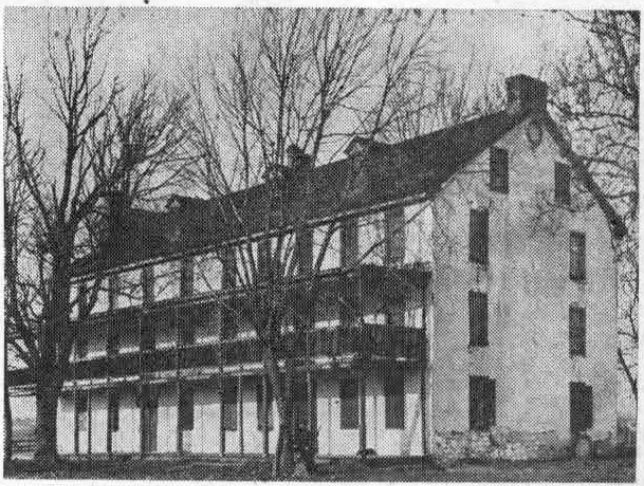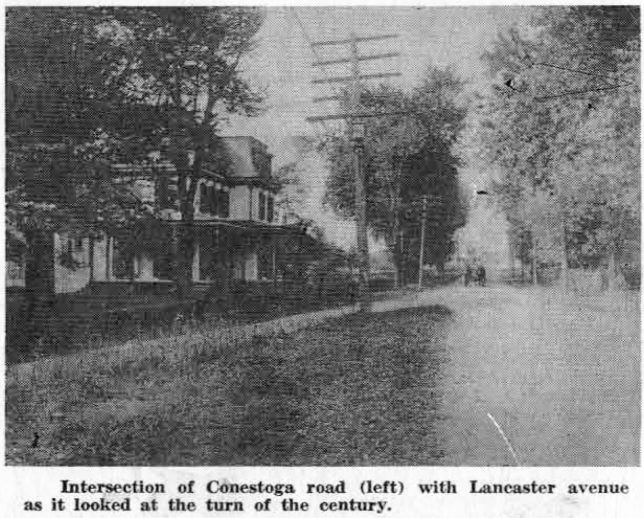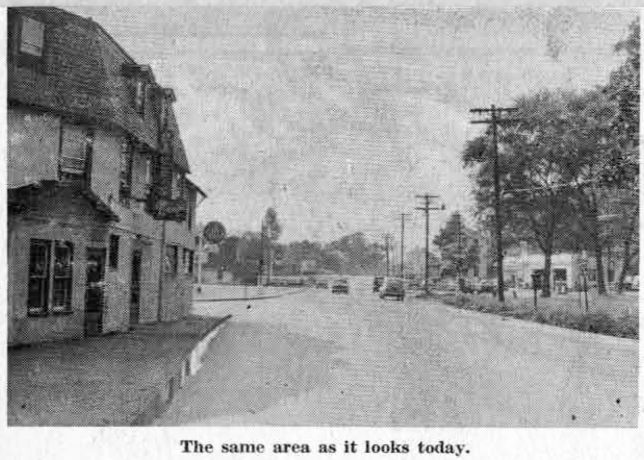When the story about two of the old Bloomingdale avenue houses, that were demolished some years ago, was first written for this column several weeks ago, the story was to have been accompanied by a picture of these houses. They were the former Benjamin F. James home on the southeast corner of Bloomingdale and Lancaster avenues, and the Fox home, immediately adjacent to it on the south. As it turned out, the houses were too much obscured by the heavy foliage of large trees to reproduce well. And so it is with regret that we must omit the picture lent to us by Mrs. Henry G. Fischer.
Mr. James tells us that he bought his Bloomingdale avenue house shortly after he came to Wayne to live in 1910, with the sale made through the real estate office of Wendell and Treat. Although it had then been unoccupied for some years, he recalls it as the former home of the Fallon family. Mr. Fox had bought the adjoining property some years prior to the James purchase.
Mrs. Fischer tells us that when the Bloomingdale avenue houses were built, those of identical architecture were placed opposite each other along the east and the west sides of the street. According to that plan, the James house must have looked similar to the Ramsey house, later the Charles T. Mather home. An excellent picture of this old house was shown in this column in the issue of July 1. It was recently demolished to make room for the Bell Telephone Company’s dial exchange building, now being erected on the southwest corner of Bloomingdale and Lancaster avenues. By the same token the Fox house was the twin to the Fischer house, a picture of which was shown in the June 17 issue of this column.
The results of the remodeling that Mr. James did, soon after his purchase of the house, are at least indicated in the picture lent us by Mrs. Fischer. For one thing, the front porch which went the entire width of the old house was replaced by a small portico entrance to the front door, thus giving more sunlight into the downstairs. Mr. James describes the stable at the rear as “quite a place,” with its second floor made into wood panelled quarters for the coachman’s family. These quarters were used as recreation rooms for families who later owned the house, and for their guests.
As Mr. James recalls the date, it was in about 1930 that these properties were sold to the corporation that erected the Kingsway apartment house. There was some controversy in regard to the location of the building itself, the decision being that it must be set back as far as the Fox property on which, as a matter of fact, it stands entirely.
Mr. James describes his former lot as “a pie shaped piece of ground,” with frontage on both Lancaster and Bloomingdale avenues. As the writer walked across that “pie shaped piece” recently she recalled Mr. James’ description of the many difficulties encountered in tearing down this well built structure with its hair-plaster walls. Evidently the new owners lost heart when they reached the foundation walls. For no demolition at all of any of these was done, the cellar rooms being merely filled in with dirt. Now, 25 years later, that dirt has settled to the extent that the tops of the cellar walls are slightly above ground, making the room plan of the old house again visible.



